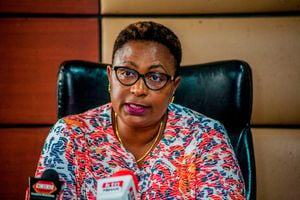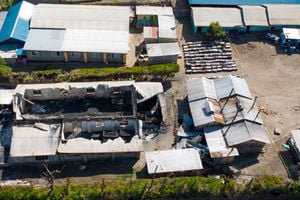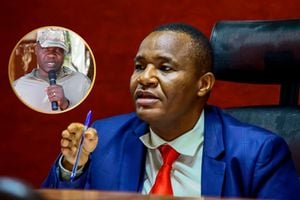Nuclear energy will see Africa achieve AfSEM

The nuclear powerplant Gundremmingen is pictured in Gundremmingen, southern Germany on February 26, 2021. - The Bavarian village of Gundremmingen is still proud of its nuclear power plant, whose coat of arms bears a golden atom. But a page will be turned with the upcoming closure of this facility to accompany Germany in its energy revolution. (Photo by LENNART PREISS / AFP)
The COP28 wasn’t just a “Health COP” but also one keen on tackling the energy poverty. Under the theme “Outcome of COP28: Infrastructure, policies and skills for tripling renewables and accelerating the energy transition”, the 2024 Assembly explored priorities for the energy transition and immediate steps to accelerate progress towards tripling renewable power capacity to at least 11 terawatts by 2030.
This great need for energy is more felt in Africa. Over 40 per cent of Africans, 600 million, lacked access to electricity in 2022. Then, 74 per cent of the electricity was produced with fossil fuels, with low-carbon energies only producing 24.7 per cent of the electricity output: Hydro 19 per cent, wind and solar 4.5 per cent and nuclear 1.2 per cent, the International Atomic Energy Agency (IAEA) says.
Despite being a leading source of renewables—accounting for 40 per cent of the energy mix—Africa’s electricity consumption is five times less than the global average. This is mainly attributed to a pitiable renewable energy investment climate. We only have two to three per cent of energy funding available globally. These realities have pushed the African Union (AU) to accelerate and expedite several initiatives aiming at ensuring universal access to electricity and bridging the poverty gap.
In 2014, the AU Commission launched African Single Electricity Market (AfSEM), a flagship project for one of the largest electricity markets, covering a population of more than 1.3 billion. Projected to cost $1 trillion, the Energy Master Plan, in terms of energy generation, targets off-grid solutions, regional cross-border interconnections and distribution harmonisation of policies across Africa, leading to a continental electricity market by 2040.
Over the past half century, nuclear power has complemented renewables in reducing power sector carbon dioxide emissions by over 60 Gt, almost two years’ worth of global energy-related emissions, and providing 10 per cent of global electricity generation, an unmatched electricity security.
But Africa woefully lags behind in this peaceful nuclear energy race: As of last year, only two countries had nuclear power programmes: South Africa and Egypt. South Africa has two 970 MWE nuclear reactors, which started commercial operation in the 1980s, producing 4.9 per cent of the country’s electricity in 2022. Meanwhile, Ghana, Kenya and Nigeria have made a decision to deploy nuclear energy and are progressing with plans. Others exploring nuclear energy include Algeria, Ethiopia, Morocco, Niger, Namibia, Rwanda, Senegal, Sudan, Tanzania, Tunisia, Uganda and Zambia. The “World Nuclear Association Nuclear Fuel Report” says by 2040, Africa could have 18 GWe of nuclear power.
Africa must develop a comprehensive policy framework for a nuclear sector. This is as a promising solution to provide low-carbon, reliable energy to support socioeconomic development. This will require a robust infrastructure development, including human resource capabilities, grid infrastructure, security measures and radioactive waste management.
Mr Onyango is a Global Fellow at Moving Worlds Institute [email protected].





